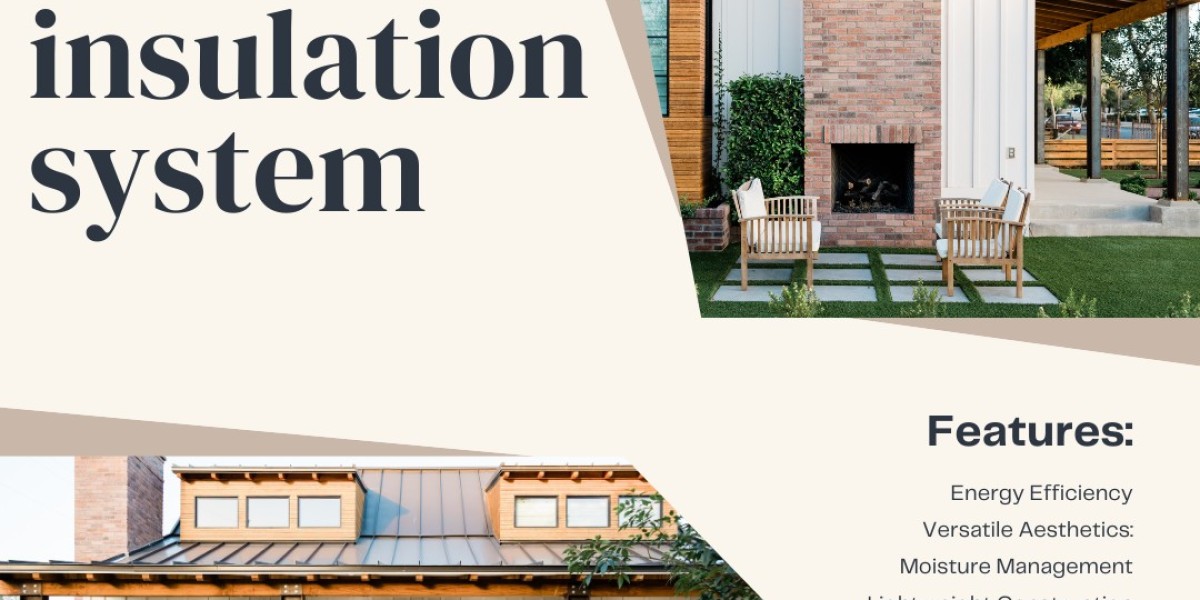In the quest for energy-efficient and sustainable homes, exterior insulation systems have emerged as a popular solution. These systems not only improve thermal performance but also contribute to the overall durability and aesthetic appeal of buildings. Whether you’re constructing a new property or upgrading an existing one, understanding exterior insulation systems is crucial for making informed decisions.
What is an Exterior Insulation System?
An exterior insulation system is a building envelope solution designed to enhance energy efficiency by adding insulation to the outside of a structure. These systems are commonly applied to both residential and commercial buildings and act as a thermal barrier to regulate indoor temperatures, reduce energy consumption, and minimize environmental impact.
Modern exterior insulation systems often come in the form of Exterior Insulation and Finish Systems (EIFS), which combine insulation boards, adhesive layers, reinforcing mesh, and a decorative finish.
Types of Exterior Insulation Systems
- Exterior Insulation and Finish System (EIFS):
- A lightweight synthetic cladding with a foam insulation core.
- Includes a weather-resistant barrier, insulation board, base coat, reinforcing mesh, and finish coat.
- Popular for its versatility and energy efficiency.
- Continuous Insulation (CI):
- Consists of rigid foam boards applied directly to the exterior walls.
- Reduces thermal bridging by covering the entire wall surface.
- Compatible with various cladding options like brick, vinyl, or wood.
- Mineral Wool Insulation:
- Made from natural rock or slag fibers.
- Offers superior fire resistance and excellent thermal performance.
- Commonly used in commercial applications and fire-prone areas.
- Spray Foam Insulation:
- Applied as a liquid that expands into a rigid foam.
- Provides an airtight seal and high R-value for effective insulation.
- Suitable for irregularly shaped surfaces.
Benefits of Exterior Insulation Systems
- Enhanced Energy Efficiency
By creating a thermal envelope around the building, exterior insulation systems minimize heat loss in winter and heat gain in summer. This leads to lower energy bills and a reduced carbon footprint.
- Improved Indoor Comfort
These systems help maintain consistent indoor temperatures by eliminating cold spots and drafts, ensuring a comfortable living environment year-round.
- Increased Durability
Exterior insulation protects the building’s structure from weather-related damage, such as moisture infiltration, freeze-thaw cycles, and UV exposure.
- Aesthetic Flexibility
With a variety of finishes, textures, and colors available, exterior insulation systems can enhance the visual appeal of your property while maintaining functionality.
- Noise Reduction
Exterior insulation acts as a sound barrier, reducing the impact of external noise and creating a quieter indoor environment.
- Fire Resistance
Certain materials, such as mineral wool, provide excellent fire resistance, adding an extra layer of safety to your property.
Applications of Exterior Insulation Systems
- New Constructions: Integral to modern, energy-efficient building designs.
- Retrofits: Perfect for upgrading older properties to meet current energy standards.
- Commercial Buildings: Widely used in office spaces, retail stores, and multi-story complexes.
- Residential Homes: Suitable for single-family homes, townhouses, and apartment buildings.
Installation Process
- Preparation:
- Inspect the existing wall surface for damage and repair as needed.
- Clean and level the surface to ensure proper adhesion.
- Application of Insulation:
- Attach insulation boards or spray foam to the exterior surface using adhesives or mechanical fasteners.
- Ensure proper alignment to minimize gaps and thermal bridges.
- Reinforcement:
- Apply a base coat and embed a reinforcing mesh for added strength and durability.
- Finishing:
- Add the decorative finish coat in your desired texture and color to complete the system.
Maintenance Tips
- Regular Inspections: Check for cracks, water infiltration, or damage to the finish.
- Cleaning: Use a soft brush and mild detergent to remove dirt and debris.
- Prompt Repairs: Address any issues immediately to maintain the system’s integrity.
Conclusion
Exterior insulation systems offer an effective and versatile solution for improving energy efficiency, comfort, and aesthetics. By investing in these systems, homeowners and property managers can enjoy long-term savings, increased property value, and a reduced environmental impact.
If you’re considering an exterior insulation system for your home or business, consult with a professional to determine the best option for your needs. With proper installation and maintenance, these systems can provide decades of reliable performance and enhance your property’s overall appeal.



